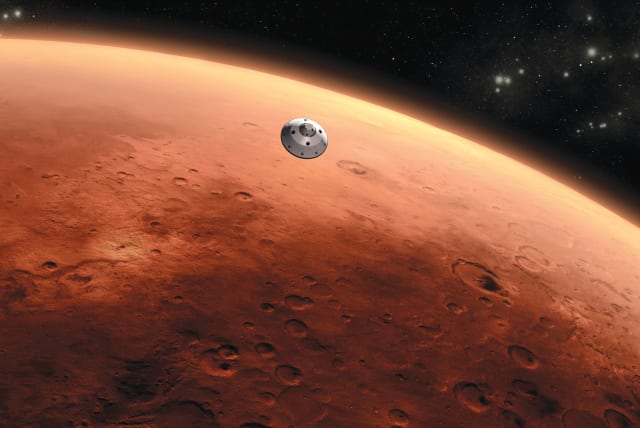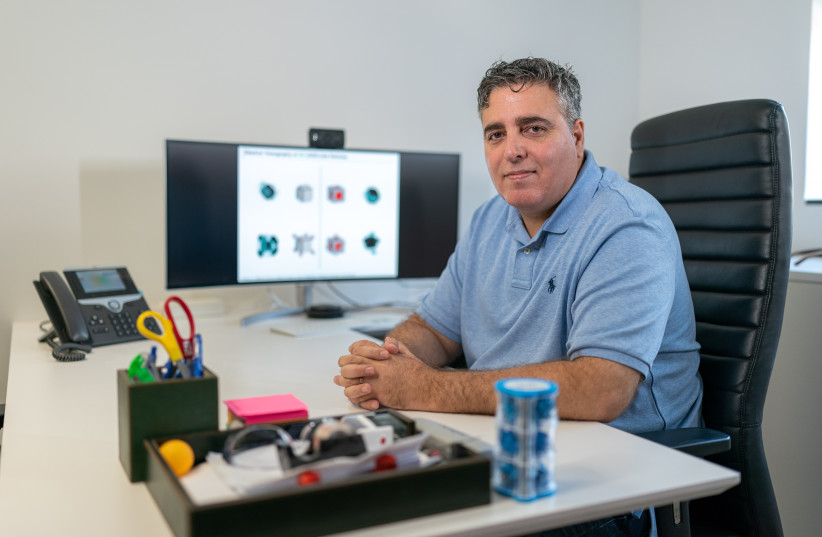Warming up in Mars? BGU finds polymers that heat up when exposed to LED

Materials that catalyze faster can be used in a wide range of fields, including pharmaceuticals and future Mars habitats.
With long-term plans for astronauts to establish a settlement on Mars, how would it be possible to live in such a cold place? It will need to be underground, but there’s no electricity. So, you could construct it with special polymers and then shine low-energy light on them to heat them up.
Creating new materials and speeding up reactions is what researchers at the Ben-Gurion University of the Negev (BGU) in Beersheba are busy doing. Materials that catalyze faster can be used in a wide range of fields, including pharmaceuticals and future Mars habitats. Its chemists have come together to combine their expertise and produce new responsive polymers.
Prof. Yossi Weizmann of BGU’s chemistry department makes gold nanoparticles that convert light into heat. Prof. Gabi Lemcoff, who is dean of the Faculty of Natural Sciences, makes latent catalysts that need to be triggered. Together with Nir Lemcoff, a master’s degree student, they spent two years developing a new kind of polymer and a more efficient and environmentally friendly way to make chemical reactions happen. (Nir Lemcoff is Gabi Lemcoff’s son, but he works under Weizmann’s supervision.)
What did they find?
Their findings were just published in the peer-reviewed scientific journal Nature Chemistry under the title “Plasmonic visible – near-infrared photothermal activation of olefin metathesis enabling photo-responsive materials.”
This new method of catalyst activation was proven to be remarkably more efficient than activation through conventional heating in all the metathesis processes (chemical reactions in which one part of each two compounds interchange to form two new compounds) tested.
“If you add my gold nanoparticles into the liquid solution with Prof. Lemcoff’s latent catalysts, the heat they generate triggers the catalysts turning the liquid into a solid,” Weizmann said. “That solid quickly heats up when exposed to LED light.”
The solid polymer is flexible when made with UV light, but it also hardens when exposed to infrared light.
“We were surprised that the polymers responded to light,” Nir Lemcoff said. “I conducted the same experiment 1,000 times by using a computerized protocol. I exposed the polymer to light, and each time it heated up quickly to the same temperatures. It was extremely stable and did not degenerate over time.”
While exciting in and of itself, this is only the beginning. Now that they understand how the reaction occurs, they can begin to design all sorts of new materials.
Jerusalem Post Store
`; document.getElementById("linkPremium").innerHTML = cont; var divWithLink = document.getElementById("premium-link"); if (divWithLink !== null && divWithLink !== 'undefined') { divWithLink.style.border = "solid 1px #cb0f3e"; divWithLink.style.textAlign = "center"; divWithLink.style.marginBottom = "15px"; divWithLink.style.marginTop = "15px"; divWithLink.style.width = "100%"; divWithLink.style.backgroundColor = "#122952"; divWithLink.style.color = "#ffffff"; divWithLink.style.lineHeight = "1.5"; } } (function (v, i) { });

